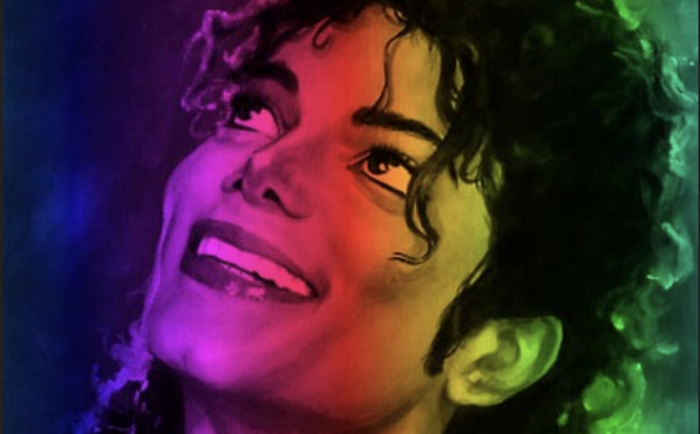So the real name of my classes’ culminating project over the last two weeks was “The Michael Jackson Experience,” and the other teachers in my building had thought I’d gone insane.
The guidance counselor came up to me in the hallway with a puzzled look.
Did Michael Jackson speak Spanish?
It was a legitimate question, considering I teach the language.
“Nope, no connection,” I told him. “We just like Michael. Miguel.”
My first period class has a few MJ diehards. They are 16 and 17-year-olds, but they know every MJ genre, album, song. I happen to be a super fan myself: Smooth Criminal or Pretty Young Thing can be heard blaring throughout my house on Sunday mornings when we clean up the house.
It wasn’t just the first period though. My second period also wrote a class story about Michael Jackson being able to sing and dance. And without my influence, the fifth period used him as an example when we learned to say, “he says” and someone did Michael’s famous “hee-hee” sound. It seemed like a common thread.
Every year—well, every year since before COVID-19—my students and I have decorated my entire classroom with a theme that they generate. One group adored the movie Coco and used each wall to create a scene from the movie. I brought in my son’s little grey rocking chair and they made a paper-mâche Mama Coco to watch over my classes. Another year, it was the majestic hotel from Gran Hotel, a Spanish Downtown Abbey-like show that we watched every Friday.
But this year, the only common obsession we had was Michael Jackson and we desperately needed to decorate. Together.
Although we were all back in the building five days a week, trying to pretend things were back to normal. They were anything but—kids didn’t want to be there, after being at home, where they could pick and choose how they spent their time. They didn’t want to sit for seven hours of adult-directed content that was mostly boring. They didn’t want to tolerate the annoying habits of 25 other kids in the same class, when they could interact more intentionally online.
The disillusioned look in their eyes begged one question: why are we here?
The answer I gave them one morning was this: the Michael Jackson Experience.
We’ll give tours, play his music on loop, celebrate his genius. The first period came up with the overall design—which albums to feature, which life experiences to explore in-depth— while the second period (a more lively crew) wanted to do something active. They eventually settled on learning a dance to Thriller they had seen on TikTok.
Kids who had never spoken to each other in class were deciding on which silhouette to trace on my Smartboard. The artsy kids were directing others to fulfill their vision with sharpies or glitter or cut paper. We played MJ’s greatest hits and left the door propped open. Other students popped in, seeing us up on chairs, painting, bopping along to the music. They wanted to stay and help.
We had a frank discussion on how to address Michael’s sexual abuse allegations and if it was possible to separate art from the artist. They wrote up a sign, which we framed on the wall, acknowledging how deeply flawed and even dangerous Michael had been, but that his genius was something to behold. Kids argued over the language, which words to use, how strongly to condemn a man who had never been convicted of anything. Other classes weighed in on the debate and we tweaked the disclaimer even further.
For the Thriller dance, I asked the kids who the best dancers in school were. They gave me two names, a boy and a girl student. I had never taught either in class, but they were frequent hall wanderers, uninterested in what was going on in the classrooms. They were both African American, big personalities, and clapped in excitement when I showed them the Thriller TikTok. I talked to their teachers and finagled them out of class a few days in a row, despite the fact that they were behind in academic work.
We went to the auditorium and hooked my computer to the booming sound system. The student choreographers put my freshman into rows of three and taught them the dance moves, mirroring the gestures in front. The kids decided to perform the dance before lunch in our school’s breezeway.
We envisioned students touring the classroom in small groups, with one of us as a guide, memorizing factoids about Michael’s life. The third period was writing up the tour notes, researching elements to include. We stopped dead in our tracks when a student read about the beginning of The Jackson 5. Michael’s dad, Joe, would sit off stage while the boys rehearsed with a belt in his hand, ready to hit his young star.
How could this poor kid not be scarred, acting out on others?
And then, when we got to his song Dangerous, as kids read out the facts of the album, I almost cried. It was a departure from the pop music Michael had done up to that point—it was slower and had a deeper meaning. Michael took all of his stardom, his incredible worldwide success, and released the song, Black or White. It went number one in 20 different countries—a song about equality and fighting racism.
Did that cancel out his alleged abuse of kids? No, students said, but it was sheer brilliance and it moved us forward as a society. Michael did that, too.
More than the specifics of Michael Jackson, we spent the mornings remembering how to collaborate with other human beings and how to enjoy being at school. How learning something and evolving your thinking is a worthy endeavor, even if it isn’t “productive.”
I’m not sure about my students, but this is the part of the school year I will remember: watching them work together, laugh about a crazy glitter spill, take ownership of something within these walls again.
~
~












Read 0 comments and reply